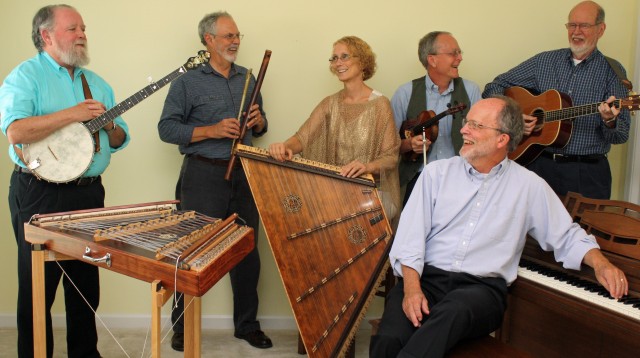Although nowadays I play solo most of the time, I love to join with other musicians in ensembles when I can, and have a series of different groups planned throughout the rest of this year: church worship team, acoustic duets, trios, quartets, even an Old-Time/Celtic sextet! If you play with other musicians, you need to make many decisions about how each player’s role fits into the overall picture.
I as an improviser tend to look for ways I can come up with special countermelodies and textural enhancements --- as well as creative, meaningful interpretations of the melody when it’s my turn to play lead, or improvisational breaks when called for.
A number of years ago I “brainstormed” a list of topics to consider when you’re a part of a musical ensemble. Here it is for your consideration and use:
I. Goals
- For songs
- Of the ensemble
- Of each instrument’s voice
II. Music genres
- Celtic only?
- Classical?
- Old-time?
- Variety?
II. Audience
- Who are they?
- What are their expectations or needs?
IV. Keys
- Choice for each piece
- Changing keys
V. Moving through time
Speed issues:
- How fast a particular song should be
- Speed changes from song to song
- Speed changes within the same song
Pulse:
- Rubato?
- Steady beat?
- Move between rubato & steady?
- Lilting or even pulse?
Rhythm:
- Quaint
- Contemporary
- Romantic
- Driving
Phrasing: notes as parts of sentences
VI. Various other arrangement choices
Variety
Place allowed for virtuosity, personality
Place allowed for improvisation
Complexity:
- Simple vs. complex chords
- Many vs. few chord changes
Mood:
- Quaint, simple, fun
- Dramatic, narrative
Exchangeability among ensembles: Common repertoire and ideas that trios, duets, etc. of colleagues can adapt
Medleys:
- Similar pieces
- Different pieces
Length
Time allowed for rehearsal
Instrumentation:
- Tradeoffs of lead instruments
- Dropping out, joining in
- Solo sections
- Cumulative start
Dynamics:
- Even volume
- Broad changes
Textures to blend:
- Plucked
- Hammered
- Bowed
- Blown
- Percussive
Beginnings
Endings
Varying melody
Accompaniment parts:
- Arpeggios
- Broken chords
- Full chords
- Bass notes
- Pads
- Counterpoint
Cues: Beginning, middle, end
VII. Repertoire choices
- Copyrights
- Writing new songs
- Teaching songs to each other
- Accepting each other’s input
VIII. Performance choices
Concert:
- Talk with audience
- Level of formality
- Level of programming
Background music
Venue acoustics
Sound systems
...Perhaps a glance over this list will bring an idea to your mind that will be a help for whatever setting you’re a part of. In some ways this is pretty comprehensive, but in other ways this contains just germs of ideas about part of each topic. Use it as you will. Blessings on your music-making!





Comments
Tim- I especially like your section about considering the blend of textures (blown, hammered, bowed, etc.). I think this is a large part of what creates musical interest for the audience and something groups often overlook as they tend to stick within their own comfort zone. Lots to think about in your article!
Jane --- Thanks for drawing attention to the textures! As I look back over the list I get the urge to expand it till it's a book or a series of magazine articles --- there's so much to consider --- but for now it'll just be a list!